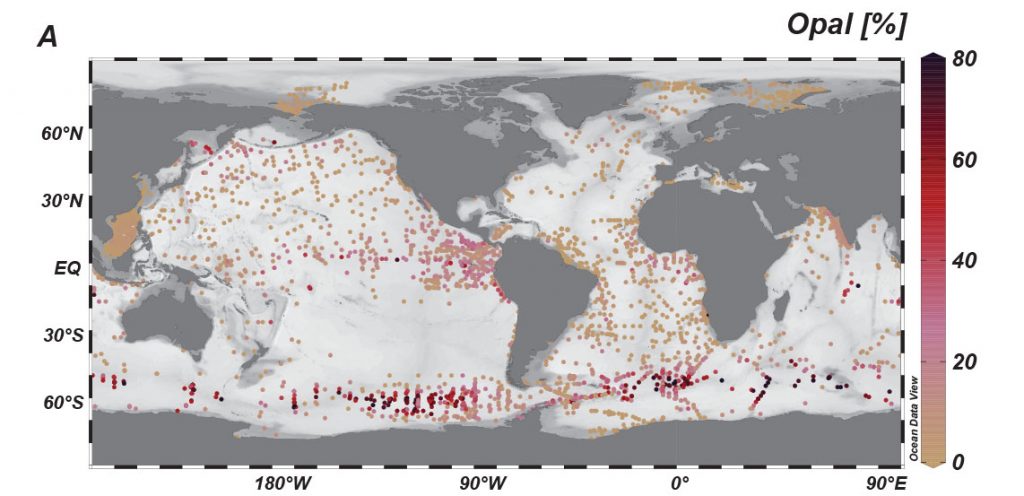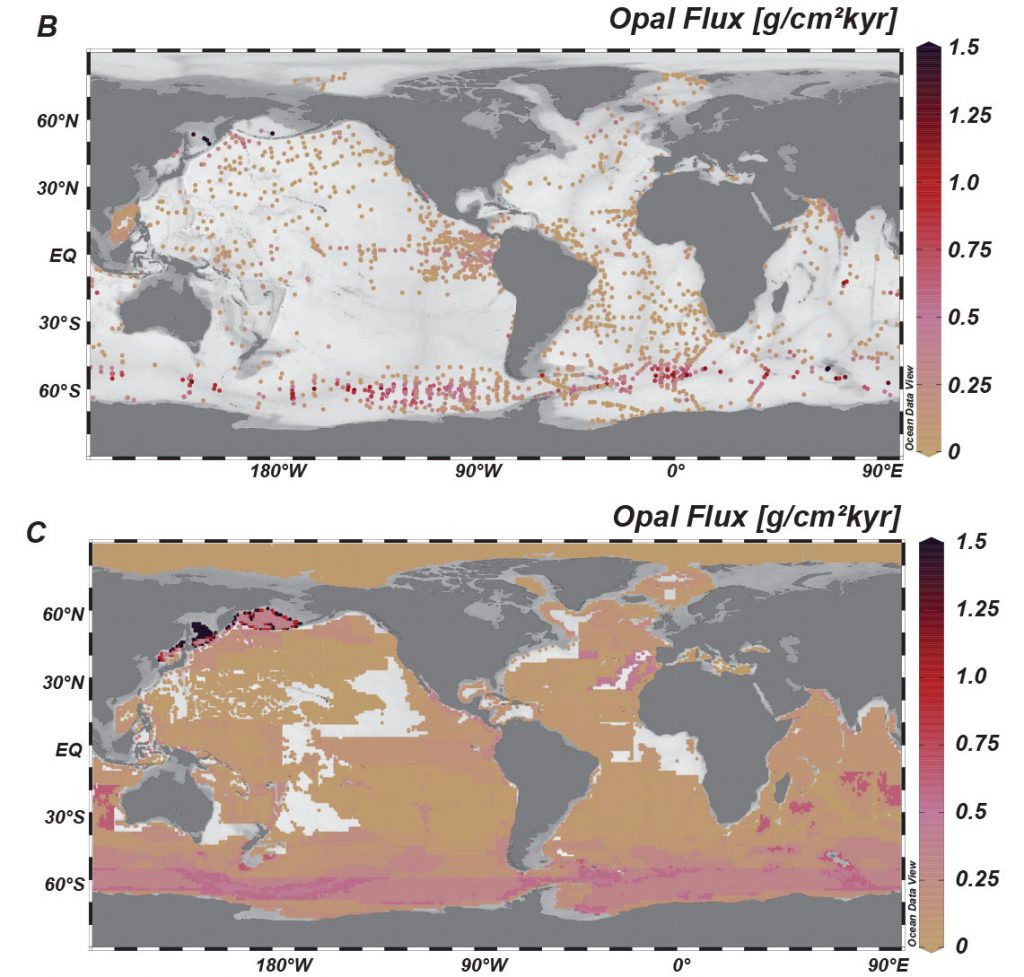A new and more quantitative atlas of the deep-sea burial fluxes of major and trace elements
Christopher Hayes (2021, see reference below) conducted a collective study gathering about 30 co-authors which aimed at reducing uncertainties on the quantitative knowledge about the burial of sedimentary components at the seafloor. Based on an updated database of more than 12,000 globally distributed marine sediment cores, they could establish the qualitative composition of the top core sediments. Thus, they combined this information with a database of 1,068 recent Thorium-normalized fluxes across the deep ocean. This resulted in a new atlas of the deep-sea burial fluxes of calcium carbonate, biogenic opal, total organic carbon (TOC), nonbiogenic material, iron, mercury, and excess barium (Baxs). More particularly, the new opal flux is roughly a factor of 2 increase over previous estimates, with important implications for the global silicon (Si) cycle. This doubling of the Si burial flux is consistent with the recent re-estimate of the dissolved Si inputs to the ocean, as for example proposed by Fabre et al. (2019, see reference below).


References:
Hayes, C. T., Costa, K. M., Anderson, R. F., Calvo, E., Chase, Z., Demina, L. L., Dutay, J‐C., German, C. R., Heimbürger‐Boavida, L-E., Jaccard, S. L., Jacobel, A., Kohfeld, K. E., Kravchishina, M. D., Lippold, J., Mekik, F., Missiaen, L., Pavia, F. J., Paytan, Adina Pedrosa‐Pamies, Rut, Petrova, M. V., Rahman, S., Robinson, L. F., Roy‐Barman, M., Sanchez‐Vidal, A., Shiller, A., Tagliabue, A., Tessin, A. C., van Hulten, M., Zhang, J. (2021). Global Ocean Sediment Composition and Burial Flux in the Deep Sea. Global Biogeochemical Cycles, e2020GB006769. Access the paper: https://doi.org/10.1029/2020GB006769
Fabre, S., Jeandel, C., Zambardi, T., Roustan, M., & Almar, R. (2019). An Overlooked Silica Source of the Modern Oceans: Are Sandy Beaches the Key? Frontiers in Earth Science, 7. Access the paper: https://doi.org/10.3389/feart.2019.00231
